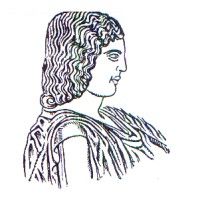预约演示
更新于:2025-05-07

Agricultural University of Athens
更新于:2025-05-07
概览
关联
27
项与 Agricultural University of Athens 相关的临床试验NCT05606419
The Crohn's Disease Exclusion Diet With Early Dairy Introduction vs Partial Enteral Nutrition (CD-EDEN) in Adult Patients With Crohn's Disease
This study aims to evaluate a novel diet for adult Crohn's disease patients (The Crohn's Disease Exclusion Diet - CDED). Some of the patients in this study will receive the CDED combined with partial enteral nutrition (PEN), while the other group will receive the CDED with early introduction of dairy products, that were eliminated from the initial CDED protocol.
开始日期2024-03-10 |
申办/合作机构 |
NCT06163937
Examining the Acute Effects of Two Different Fruit Juices (Orange Juice and Mixed Fruit Juice Consisted of Apple, Orange, Grape, and Pomegranate) on Postprandial Glycemic Responses and Satiety in Healthy Individuals
This study investigated the acute effects of two fruit juices on postprandial glycemic responses and satiety in healthy individuals
开始日期2023-09-01 |
NCT05866744
Effects of a Time-restricted Hypocaloric Mediterranean Diet in Patients with Non-alcoholic Fatty Liver Disease on Glucose Metabolism (CHRONO-NAFLD Project)
The effects of a time-restricted hypocaloric Mediterranean type diet compared to a conventional hypocaloric Mediterranean type diet on blood glucose metabolism and liver steatosis in people with non-alcoholic fatty liver disease will be investigated.
开始日期2023-05-08 |
100 项与 Agricultural University of Athens 相关的临床结果
登录后查看更多信息
0 项与 Agricultural University of Athens 相关的专利(医药)
登录后查看更多信息
8,662
项与 Agricultural University of Athens 相关的文献(医药)2025-12-31·Italian Journal of Animal Science
Nutritional, phenolic and
in vitro
digestion characteristics of dried grape pomace processed with different micronization/air-classification protocols
作者: Casalino, Elisabetta ; Blando, Federica ; Tsiplakou, Eleni ; Maggiolino, Aristide ; De Palo, Pasquale ; Greco, Roberta
2025-12-15·Animal Biotechnology
Nutrigenomic evidence of phytogenic cytoprotective functions in the ovary and liver provides mechanistic support for improved laying hen performance
Article
作者: Mountzouris, Konstantinos C. ; Brouklogiannis, Ioannis
2025-09-01·Food Microbiology
VBNC induction and persistence of Listeria monocytogenes Scott A as a defence mechanism against free chlorine stress
Article
作者: Balomenos, Athanasios ; Skandamis, Panagiotis ; Tsakanikas, Panagiotis ; Arvaniti, Marianna
100 项与 Agricultural University of Athens 相关的药物交易
登录后查看更多信息
100 项与 Agricultural University of Athens 相关的转化医学
登录后查看更多信息
组织架构
使用我们的机构树数据加速您的研究。
登录
或

管线布局
2025年10月20日管线快照
无数据报导
登录后保持更新
药物交易
使用我们的药物交易数据加速您的研究。
登录
或

转化医学
使用我们的转化医学数据加速您的研究。
登录
或

营收
使用 Synapse 探索超过 36 万个组织的财务状况。
登录
或

科研基金(NIH)
访问超过 200 万项资助和基金信息,以提升您的研究之旅。
登录
或

投资
深入了解从初创企业到成熟企业的最新公司投资动态。
登录
或

融资
发掘融资趋势以验证和推进您的投资机会。
登录
或

Eureka LS:
全新生物医药AI Agent 覆盖科研全链路,让突破性发现快人一步
立即开始免费试用!
智慧芽新药情报库是智慧芽专为生命科学人士构建的基于AI的创新药情报平台,助您全方位提升您的研发与决策效率。
立即开始数据试用!
智慧芽新药库数据也通过智慧芽数据服务平台,以API或者数据包形式对外开放,助您更加充分利用智慧芽新药情报信息。
生物序列数据库
生物药研发创新
免费使用
化学结构数据库
小分子化药研发创新
免费使用